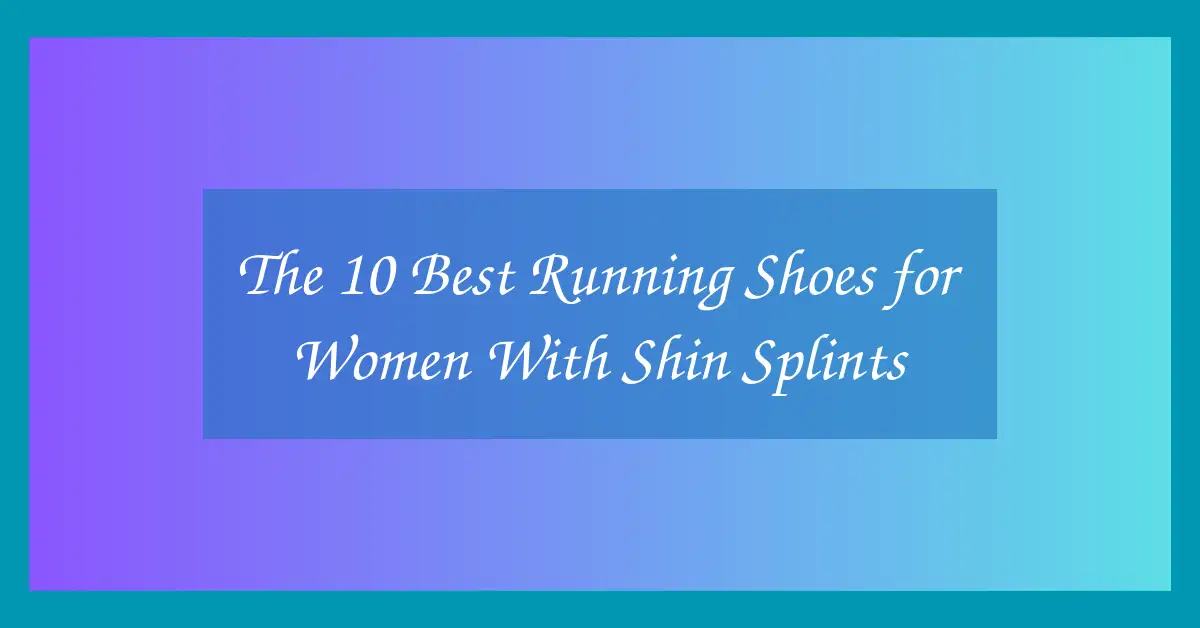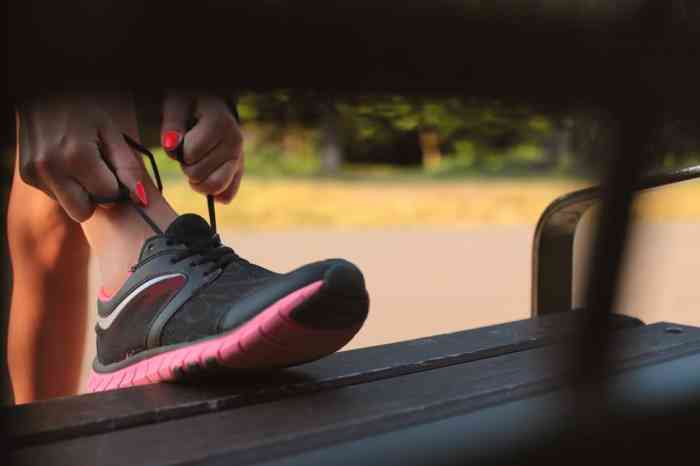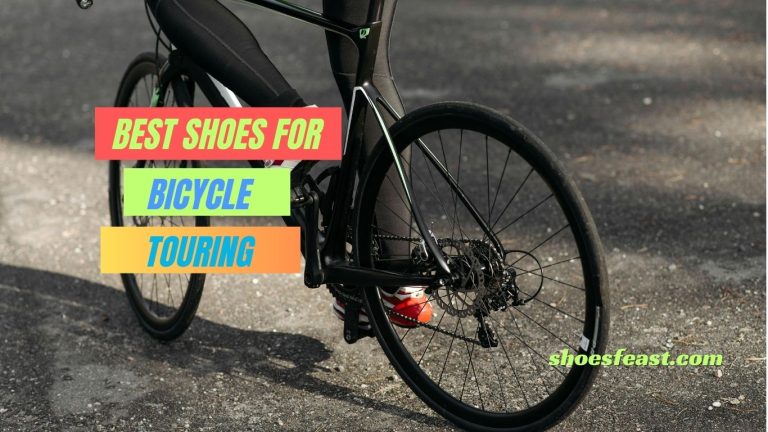The 10 Best Running Shoes for Women With Shin Splints
Shin splints are a common struggle for active women, especially runners who log frequent miles. Choosing the right footwear plays a critical role in reducing pain and promoting recovery. Our guide on the Best Running Shoes for Women With Shin Splints explores top-rated models designed to cushion impact and support proper foot alignment.
Running with shin splints can feel like a frustrating cycle, but the right shoes can help break it. From enhanced arch support to superior shock absorption, the following picks aim to minimize stress on the lower legs and promote smoother, pain-free strides. Let’s dive into the most supportive options available for female runners battling shin splints.
Best Running Shoes for Women With Shin Splints
1. ASICS Gel-Kayano 30
The ASICS Gel-Kayano 30 is a stability shoe engineered for overpronators, making it a standout for runners with shin splints. Its 4D Guidance System helps guide the foot through a smooth stride, reducing lower leg stress.
It features a new PureGEL technology embedded in the rearfoot, delivering enhanced shock absorption with a softer underfoot feel. This cushioning is ideal for minimizing the repetitive impact that triggers shin pain.
Women with high mileage needs will appreciate the FF BLAST PLUS ECO midsole foam, offering energy return while keeping the foot stable. Despite the extra support, the Kayano 30 maintains a lightweight structure for everyday use.
The breathable upper adapts to the foot, while the wider base improves balance. Runners recovering from shin splints find it supportive without being overly rigid, making it one of the top comfort picks on the market.
Pros
- Excellent stability control
- Soft PureGEL cushioning
- Eco-conscious midsole
Cons
- May feel bulky to some
- Break-in period needed
2. Brooks Adrenaline GTS 23
The Brooks Adrenaline GTS 23 is a go-to for runners needing structured support. It incorporates the brand’s GuideRails system to limit excess movement, which can aggravate shin splints in unstable feet.
This shoe uses DNA LOFT v2 cushioning throughout the midsole, striking a balance between softness and responsiveness. Runners often find this helps absorb shock on hard surfaces without sacrificing performance.
Brooks has updated the upper with a breathable, engineered mesh that adapts to a woman’s foot shape, improving comfort and fit. The 12mm drop also encourages heel-first landings that reduce shin strain.
The Adrenaline GTS 23 is best for everyday training and recovery runs. It’s known for long-lasting comfort, making it ideal for women dealing with persistent shin discomfort.
Pros
- Supportive GuideRails system
- Balanced midsole cushioning
- Good fit for narrow heels
Cons
- Not ideal for speedwork
- Heavier than neutral shoes
3. HOKA Clifton 9
The HOKA Clifton 9 brings signature maximal cushioning with a lighter build, making it a great match for women who want plush protection from shin splints. Its early-stage Meta-Rocker encourages natural transitions that ease leg fatigue.
This version sheds some weight while adding more midsole foam, giving a soft yet responsive ride. Its compression-molded EVA absorbs harsh impact and is perfect for sensitive shins.
The upper is made from an engineered knit that hugs the foot without irritation. A gusseted tongue keeps the fit secure, reducing unnecessary foot movement that can worsen shin pain.
It’s a neutral trainer suitable for both beginners and seasoned runners looking for all-day comfort. The wide base adds stability without needing structured corrections, which many appreciate.
Pros
- Max cushioned for impact relief
- Lightweight for daily runs
- Smooth transitions via Meta-Rocker
Cons
- Less arch support
- Roomy forefoot might not suit all
4. New Balance Fresh Foam X 880v13
New Balance’s 880v13 is built for durability and consistent cushioning, which makes it perfect for runners managing shin splints. The Fresh Foam X midsole delivers ultra-soft landings with a smooth heel-to-toe transition.
This version enhances the comfort experience with a dual-layer midsole that blends firmness underfoot with plush foam toward the top, protecting your legs during high-mileage training.
It’s versatile across distances and offers a neutral fit that works well for women with standard gaits. A structured heel counter stabilizes your foot during impact, reducing lower leg fatigue.
The engineered mesh upper adds breathability while offering a secure lockdown fit. It’s a great everyday trainer for runners seeking comfort and protection from repetitive shock.
Pros
- Consistently smooth ride
- Plush dual-layer cushioning
- Stable heel support
Cons
- Less responsive than others
- Some feel it runs warm
5. Saucony Guide 16
The Saucony Guide 16 is a reliable stability trainer made for women who need extra support to manage shin splints. Its PWRRUN cushioning gives a firm yet comfortable ride that protects during long sessions.
This model includes a HOLLOW-TECH guidance frame that subtly controls motion without feeling intrusive, helping prevent overpronation without harsh corrections.
The FormFit upper molds to your foot for a personalized fit, and the streamlined design cuts excess bulk. It’s ideal for daily training with its responsive cushioning and midfoot support.
Women appreciate the blend of lightness and security in the Guide 16. It helps create a stable platform that minimizes shock and corrects foot mechanics contributing to shin pain.
Pros
- Stable yet comfortable ride
- Supportive guidance frame
- Form-fitting upper
Cons
- Not for neutral runners
- Stiffer feel than others
6. Nike Air Zoom Structure 24
The Nike Air Zoom Structure 24 is a stability shoe with a performance-driven design that helps prevent overpronation an underlying cause of shin splints. Its dual-density midsole uses firmer foam on the medial side to guide foot motion efficiently.
With a Zoom Air unit in the forefoot, it delivers responsive cushioning that helps absorb impact during toe-off, reducing stress on the shins over long distances.
The upper is durable yet breathable, with extra padding in the tongue and heel collar to improve step-in comfort. Runners recovering from shin pain appreciate the structured fit and secure lockdown feel.
This shoe is best suited for daily runs, long miles, and recovery workouts. The stability features aren’t aggressive, making it a flexible choice for runners needing light control with ample comfort.
Pros
- Responsive Zoom Air cushioning
- Supportive for mild overpronators
- Durable upper with plush feel
Cons
- Heavier than neutral options
- Break-in period for support system
7. Mizuno Wave Inspire 19
The Mizuno Wave Inspire 19 uses a signature wave plate technology to distribute shock evenly and promote smoother transitions, which can significantly reduce shin discomfort. It’s a great pick for women needing moderate stability without bulk.
The Enerzy foam in the midsole gives a soft yet springy feel that protects against repetitive impact while providing some energy return. It’s well-suited for long-distance runners or those recovering from lower leg issues.
Its anatomical design promotes proper alignment, and the secure heel counter adds stability without restricting natural motion. The upper is sleek, breathable, and reinforced in high-wear zones for durability.
This model balances performance with protection, helping to minimize the pounding effect on the lower legs that causes shin splints.
Pros
- Wave plate for even shock absorption
- Balanced and stable ride
- Durable and breathable design
Cons
- Stiffer than some cushioned shoes
- Not ideal for minimalists
8. ON Cloudflyer 4
The ON Cloudflyer 4 blends premium cushioning with light stability, making it ideal for female runners with shin splints who don’t want a bulky feel. Its Helion™ superfoam and CloudTec® elements cushion every step while providing a responsive, bouncy ride.
The wide platform and external heel counter help center the foot, promoting a more neutral stride and reducing rotational forces on the lower legs.
This version has a star-lacing system and 3D-molded heel for an improved fit, while the Speedboard plate underfoot adds structure and propulsion without harsh correction.
It’s a sleek, modern shoe for those who value performance and style, especially runners looking for comfort and control in one package.
Pros
- CloudTec cushioning reduces impact
- Secure fit with star-lacing
- Light stability without stiffness
Cons
- Price may be high for some
- May run narrow in forefoot
9. Altra Provision 7
The Altra Provision 7 offers a zero-drop platform combined with dynamic support features, making it a standout for runners focused on natural motion and shin pain relief. The Balanced Cushioning design keeps the heel and forefoot at equal height, aligning the body posture to minimize impact forces.
GuideRail™ technology on the medial side provides adaptive support for overpronators, helping correct foot mechanics that contribute to shin splints.
It features Altra EGO™ foam for a soft, bouncy ride and a FootShape™ toe box that allows natural toe splay for improved stability and balance during runs.
Women seeking a more natural stride with subtle guidance will find the Provision 7 particularly helpful for easing lower leg strain during both short and long runs.
Pros
- Zero-drop promotes alignment
- GuideRail offers dynamic support
- Wide toe box for comfort
Cons
- Transition period for zero-drop
- Less cushioning than max-cushioned shoes
10. Adidas Solarcontrol
The Adidas Solarcontrol is designed with long-distance runners in mind, especially those needing gentle stability for injury prevention. Its LEP 2.0 system offers torsional support while guiding the foot into a smoother motion path.
The shoe uses full-length BOOST foam for energy return and cushioning, which helps absorb the repetitive pounding that can worsen shin splints.
The midfoot is reinforced with supportive overlays that help with arch support, while the upper features a soft, engineered mesh that conforms comfortably to the foot.
It’s a durable, high-mileage option for women looking for a responsive ride without compromising support. The stable heel structure makes it ideal for runners needing gentle correction with a plush underfoot feel.
Pros
- BOOST midsole for soft landings
- Stable platform with LEP support
- Durable build for long runs
Cons
- Less flexible than some trainers
- Heavier than neutral shoes
| Product Name | Cushioning Type | Support Level | Best For | Weight (Approx) |
|---|---|---|---|---|
| ASICS Gel-Kayano 30 | PureGEL + FF BLAST PLUS | High Stability | Overpronators & Recovery | 9.1 oz |
| Brooks Adrenaline GTS 23 | DNA LOFT v2 | Stability | Everyday Support Runs | 9.1 oz |
| HOKA Clifton 9 | EVA Foam | Neutral | Soft Long Runs | 7.3 oz |
| NB Fresh Foam X 880v13 | Fresh Foam X | Neutral | Daily Distance | 8.4 oz |
| Saucony Guide 16 | PWRRUN | Moderate Stability | Training with Light Support | 8.8 oz |
| Nike Air Zoom Structure 24 | Zoom Air + Foam | Stability | Impact Protection | 9.3 oz |
| Mizuno Wave Inspire 19 | Enerzy + Wave Plate | Stability | Shock Distribution | 8.9 oz |
| ON Cloudflyer 4 | Helion + CloudTec | Light Stability | Responsive Comfort | 8.8 oz |
| Altra Provision 7 | Altra EGO | Adaptive Support | Natural Motion | 8.6 oz |
| Adidas Solarcontrol | BOOST Foam | Moderate Stability | High Mileage Runs | 10.0 oz |
Best Running Shoes for Women With Shin Splints Buying Guide
Importance of Cushioning
Proper cushioning absorbs the repetitive shock your legs endure with each stride. This is especially crucial for women dealing with shin splints. Look for shoes with midsole technologies like PureGEL, DNA LOFT, or Fresh Foam X that offer soft landings while maintaining energy return for smooth transitions.
Choosing the Right Support Type
Stability shoes can help correct overpronation, which often contributes to shin pain. Support technologies like GuideRails, HOLLOW-TECH, and LEP frames gently guide foot motion. However, runners with neutral gaits may prefer cushioning-focused neutral shoes that prioritize softness over correction.
Heel-to-Toe Drop Considerations
Higher heel drops (10–12mm) can help reduce strain on the shins by shifting pressure away from the forefoot and calf. Shoes like the Adrenaline GTS 23 or Structure 24 use this principle to support heel-strike runners. However, zero-drop models like the Altra Provision 7 promote natural alignment for a different recovery approach.
Fit and Comfort Features
A secure fit ensures your foot doesn’t shift within the shoe reducing the chance of muscle fatigue or misalignment. Look for features like gusseted tongues, 3D-molded heels, and FormFit uppers. Breathable engineered mesh keeps your foot cool and reduces friction across long miles.
Weight vs. Protection Trade-Off
Lighter shoes reduce effort but may offer less protection. If you’re recovering or logging long distances, choose models with extra cushioning even if they’re heavier. Examples include the Kayano 30 or Solarcontrol, which prioritize impact relief over speed.
FAQ
Do stability shoes really help with shin splints?
Yes, stability shoes can help reduce shin splints by correcting overpronation a common biomechanical cause of lower leg pain. They guide the foot into a more neutral motion, which minimizes the stress placed on the shin bones and surrounding muscles. However, the right support level depends on your gait pattern.
Is a high heel-to-toe drop better for shin splints?
High heel drops can reduce strain on the calves and lower legs, making them helpful for runners dealing with shin splints. They encourage heel striking, which shifts impact absorption away from the front of the leg. Shoes with 10–12mm drops are often recommended during the recovery phase.
Can I run with shin splints if I get the right shoes?
While the right shoes can alleviate pain and prevent worsening of shin splints, it’s important to listen to your body. Continue running only if the discomfort is mild and does not worsen during or after activity. Supportive, cushioned shoes can help reduce the impact that aggravates the condition.
What’s better: cushioned or minimal shoes for shin splints?
Cushioned shoes are generally better for runners with shin splints because they absorb impact and reduce muscle fatigue. Minimalist shoes lack this protection and can worsen symptoms unless your body is already well adapted to low-drop, low-cushion footwear. Recovery and comfort should take priority over performance during this time.
How do I know if I overpronate?
You can check for overpronation by observing wear patterns on your old shoes. Excessive wear on the inner edge of the outsole is a sign. You can also visit a running store for a gait analysis or consult a physical therapist. If overpronation is confirmed, stability shoes are a smart choice.
Should I stop running completely if I have shin splints?
Not always. Mild shin splints can often be managed with reduced mileage, proper shoes, and surface changes. You may want to switch to lower-impact activities like cycling or swimming temporarily. However, persistent or sharp pain requires rest and medical consultation to prevent more serious injury.
Verdict
Finding the best running shoes for women with shin splints involves understanding your gait, cushioning needs, and pain level. Whether you need structured support like the ASICS Kayano 30 or plush neutrality like the HOKA Clifton 9, each of the ten shoes above offers a solution for pain relief and injury prevention. Invest in the right pair and give your legs the comfort and protection they deserve for every mile ahead.







